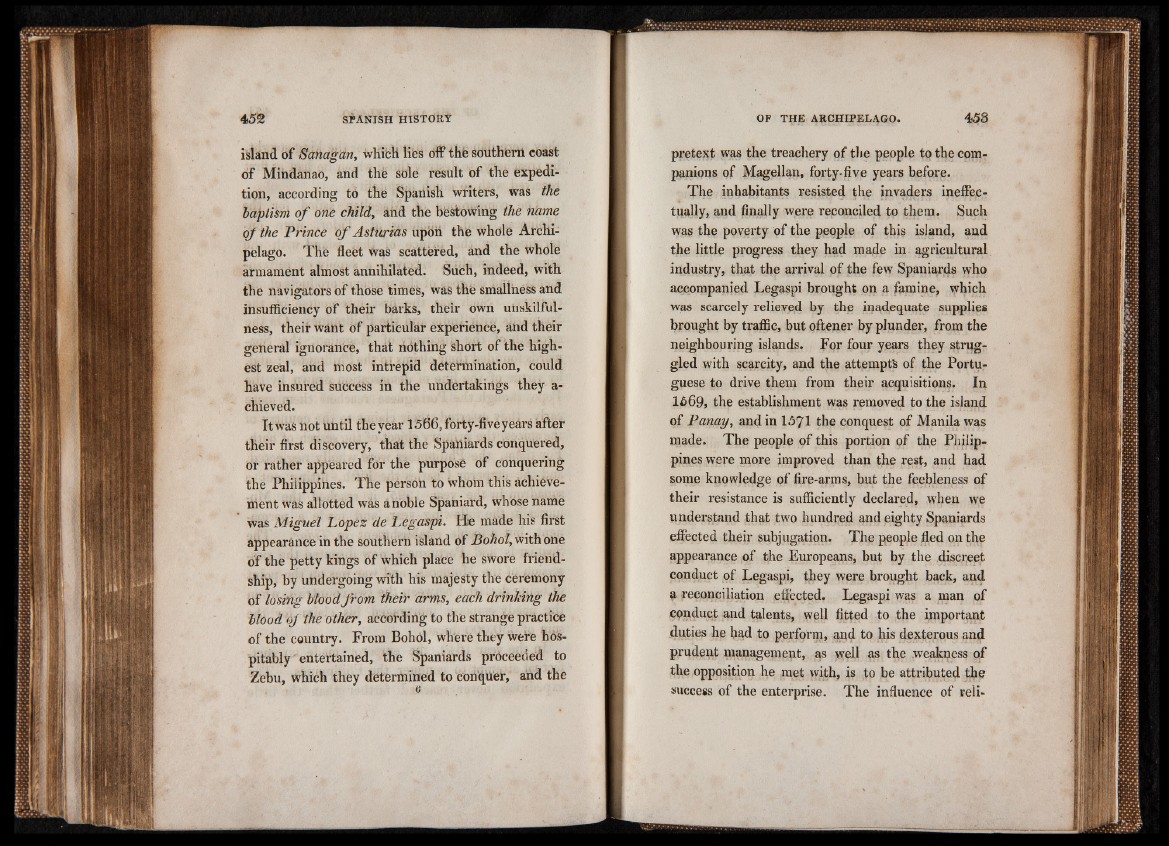
island of Sanagan, Which Ii’es òif thè southern coast
of Mindanao, and thè Sóle result of the expedition,
according to the Spanish writers, was the
baptism of one child, and the bestowing the name
of the Prince of Asturias upbii the whole Archipelago.
Thè fleet Was scàttèfed, and the whole
armament almost annihilated. Siièh, indeed, with
the navigators of those times, was the smallness and
insufficiency of their barks, their own un skilfulness,
their Want of particular experience, and their
general ignorance, thài nothing Short of the highest
zeal, aUd most intrepid determination, could
have insured success in the undertakings they a-
chieved.
It was ttot until the year 1566, forty-five years after
their first discovery, that the Spaniards conquered,
or rather appeared for the purpose of conquering
the Philippines. The person to whom this achievement
Was allotted was a noble Spaniard, Whose name
was Miguel Lopez de Lègaspi. He made his first
appearàncè in the southern island of Bohol, with one
of the petty kings Of Which place he swore friendship,
by undergoing with his majesty the ceremony
of losing blood from their arms, each drinking the
Mood oj the other, according to the strange practice
of the country. From BohOl, where they were hospitably
entertained, the Spaniards proceeded to
Zebu, Which they determined to conquer, and the
pretext was the treachery of the people to the companions
of Magellan, forty-five years before.
The inhabitants resisted the invaders ineffectually,
and finally were reconciled to them. Such
was the poverty of the people of this island, and
the little progress they had made in agricultural
industry, that the arrival of the few Spaniards who
accompanied Legaspi brought on a famine, which
was scarcely relieved by the inadequate supplies
brought by traffic, but oftener by plunder, from the
neighbouring islands. For four years they struggled
with scarcity, and the attempts of the Portuguese
to drive them from their acquisitions. In
1569, the establishment was removed to the island
of Panay, and in 1571 the conquest of Manila was
made. The people of this portion of the Philippines
were more improved than the rest, and had
some knowledge of fire-arms, but the feebleness of
their resistance is sufficiently declared, when we
understand that two hundred and eighty Spaniards
effected their subjugation. The people fled on the
appearance of fhe Europeans, but by the discreet
conduct of Legaspi, they were brought back, and
R •reconciliation effected. Legaspi was a man of
conduct and talents, well fitted to the important
duties he had to perform, and to his dexterous and
prudent management, as weft as the weakness of
the opposition he met with, is to be attributed the
success of the enterprise. The influence of veli